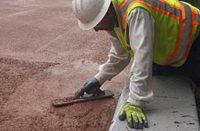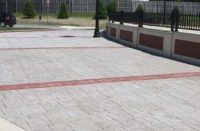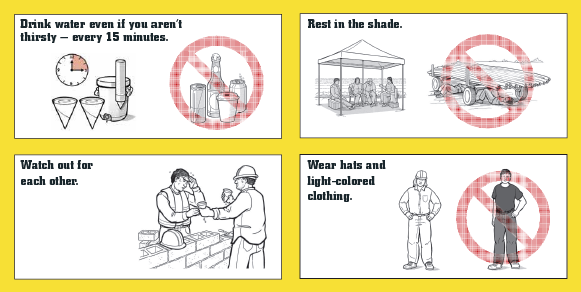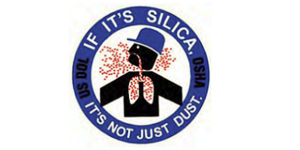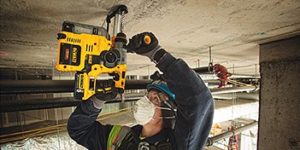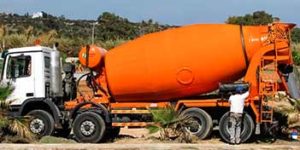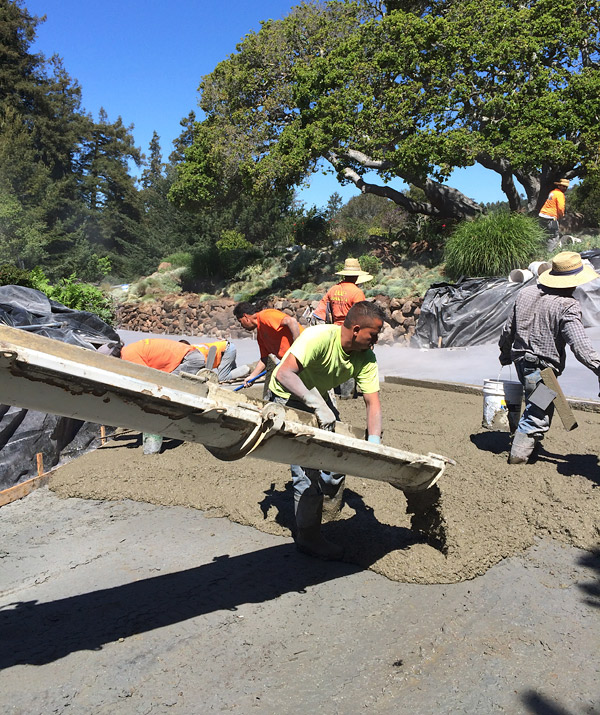
For years I’ve enjoyed learning from the pages of Concrete Decor. The pictures of amazing design and craftsmanship, detailed techniques, new products and sound advice on how to improve business have all helped me stay connected to the decorative concrete industry.
So, it was with great anticipation that I packed up my 2001 Ford Escape, promised my kids I’d bring them back something cool (concrete Star Wars figures courtesy of Blueconcrete) and headed to the 2015 Concrete Decor Show in Indianapolis to take part in some very hands-on workshops. That first morning, I was welcomed by a tight-knit community of people from around the world who shared my passion for concrete. I felt an instant connection to this diverse group . . . until.
Until someone asked, “What do you do?”
And I replied, “I’m a construction safety consultant,” which is true, but I also do concrete on the side.
“Safety?” he repeated, as he slightly tilted his head. “Oh . . .” I got this same reaction from others and realized I was probably an anomaly in this crowd. Then I met Mark, part of the Concrete Decor team and friend of Bent Mikkelsen’s, the magazine publisher and show organizer. Mark said Bent was interested in improving safety at the show and introduced me.
Bent reached out to me after the show and told me he wanted the Concrete Decor Show to provide a world-class experience for everyone and planned on promoting safety from here on out. That’s when it hit me! Despite all the articles I had read in Concrete Decor (and numerous other trade magazines) on how to improve specific skills or increase business, I hadn’t seen any that focused specifically on incorporating safety into the work process.
A safe investment
Over the past 10 years of being a safety professional, I’ve met many hard-working people who are confused, concerned or just plain irritated over the topic of safety. They agree they don’t want anyone to get hurt but many don’t know how to go about it or who to ask about what is required. Many justify risky behavior because it’s how they’ve always done it.
As I begin to share my thoughts in these pages, I hope to become a positive resource to help you understand the sometimes mysterious and often misunderstood world of safety.
One of the biggest topics in safety and health right now involves the Occupational Safety & Health Administration and its recent regulations on crystalline silica. This topic deserves a full article to explain what’s required and how construction employers can comply with the rules by June 23, 2017.
This new standard is on top of the many other job site requirements such as having a written accident prevention program, wearing suitable personal protective equipment (PPE), ladder usage, fall protection, scaffolding, traffic control, electricity and — let’s not forget as we get closer to the show in San Diego— heat awareness.
The summer heat is pretty unavoidable in the concrete world and educating the workforce on its effects is often our only defense.
The heat goes on
Several factors can put a person at a greater risk of heat-related illnesses: not being used to working in the heat (acclimatization), being overweight or not physically fit for the job, wearing heavy or dark clothing, and use of alcohol, drugs or medication, just to name a few. These factors coupled with a high heat index can lead to heat rash, heat cramps, heat exhaustion or, the most serious, heat stroke.
Most people who have recently died from heat stroke were in their first few days on the job or working during a heat wave. This is why an acclimatization program is recommended. This gradually increases the workload and heat exposure over the course of a week or two for new employees or employees who have been away from work for four or more days.
It’s important for all employees to know how to identify signs of heat-related illness and know how to respond. Symptoms of heat exhaustion include:
- Headache
- Irritability
- Heavy sweating
- Weakness
- Nausea
- Dizziness
- Vomiting
- Elevated body temperature
- Fainting
Workers showing signs of heat exhaustion should be taken to a cooler/shady area, given sips of water and cooled down. Cooling down can be done by loosening clothing and applying cold compresses or wet cloths to pulse areas (neck, wrists, temples, inside elbows/knees, groin area). Medical attention is needed if symptoms worsen or do not improve within 60 minutes.
Symptoms of heat stroke, which is a severe medical emergency, include:
- Hot, dry skin
- Confusion
- Slurred speech
- Loss of consciousness
- Seizures
- Elevated body temperature (above 104 degrees F)
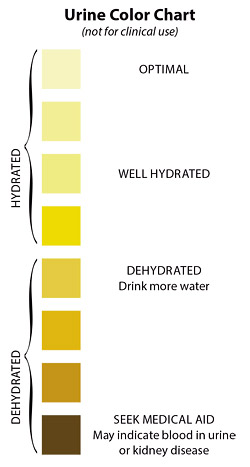
If heat stroke is suspected, call 911. Get the worker to a cooler/shady area and begin to quickly cool the body down by soaking clothing with cool water or, if possible, an ice bath. Circulate air to speed cooling.
The best method to avoid heat-related illness is prevention, such as wearing light-colored loose-fitting clothing, having regularly scheduled breaks, drinking water even if not thirsty (one cup every 15 to 20 minutes is recommended), acclimatizing workers and adjusting work hours to avoid the intense midday heat. Ingesting electrolyte powders like the ones endurance athletes use is also beneficial.
One of the easiest ways to determine your level of hydration is to consult a urine color chart. Use the provided chart to help determine your level of hydration and perhaps add some humor to your safety discussion.
 For additional resources to help with your heat awareness training, scan the QR code to access OSHA’s “Water. Rest. Shade.” info. There you can download the Heat Safety Tool app or get the Heat Safety Training Kit in English or Spanish. For additional information, visit www.osha.gov/heat.
For additional resources to help with your heat awareness training, scan the QR code to access OSHA’s “Water. Rest. Shade.” info. There you can download the Heat Safety Tool app or get the Heat Safety Training Kit in English or Spanish. For additional information, visit www.osha.gov/heat.
from a safety professional or your area’s OSHA consultation program.

